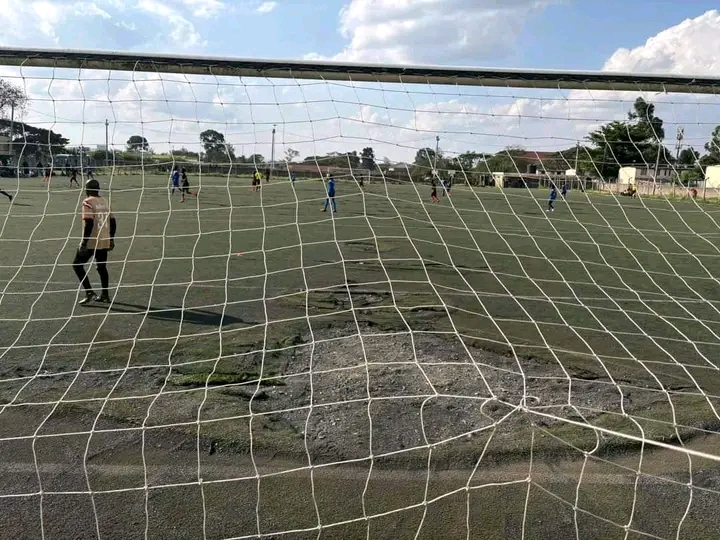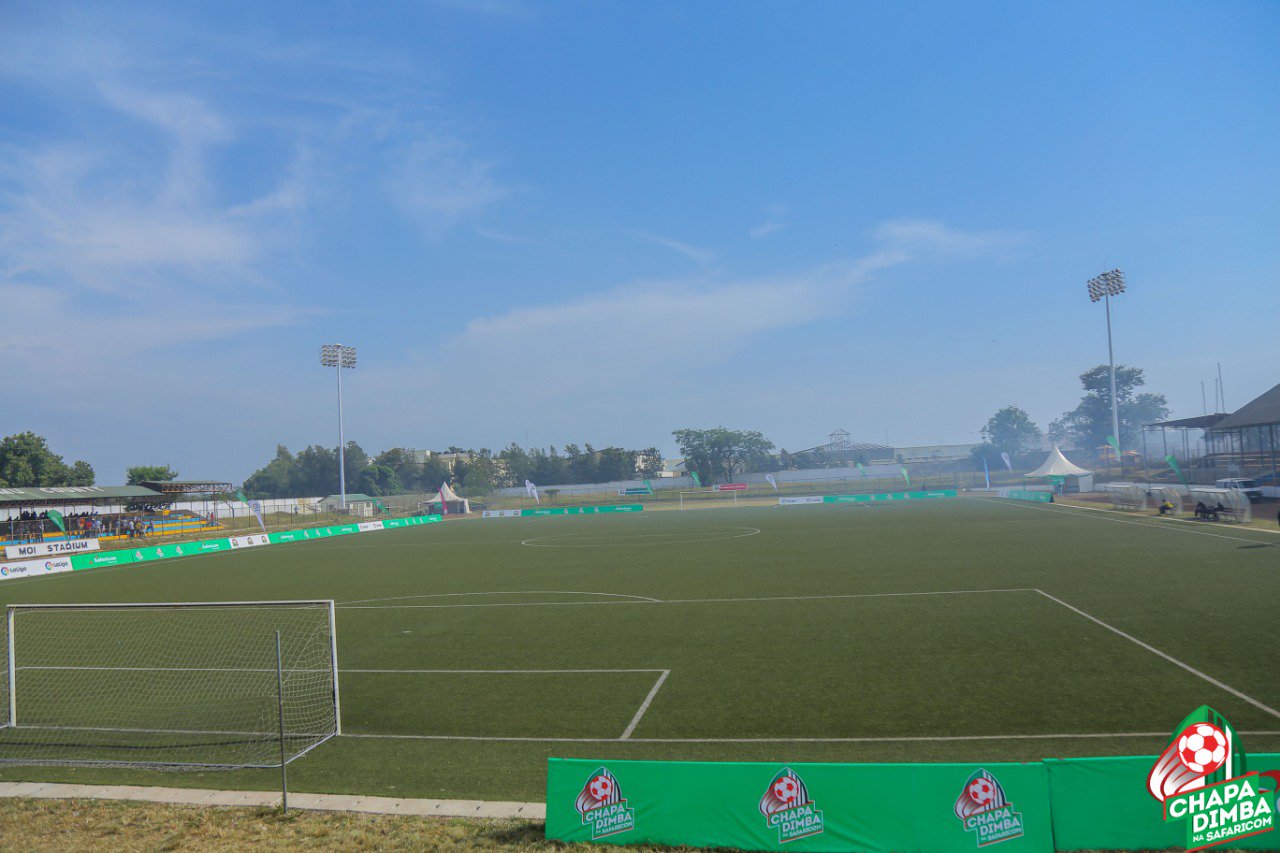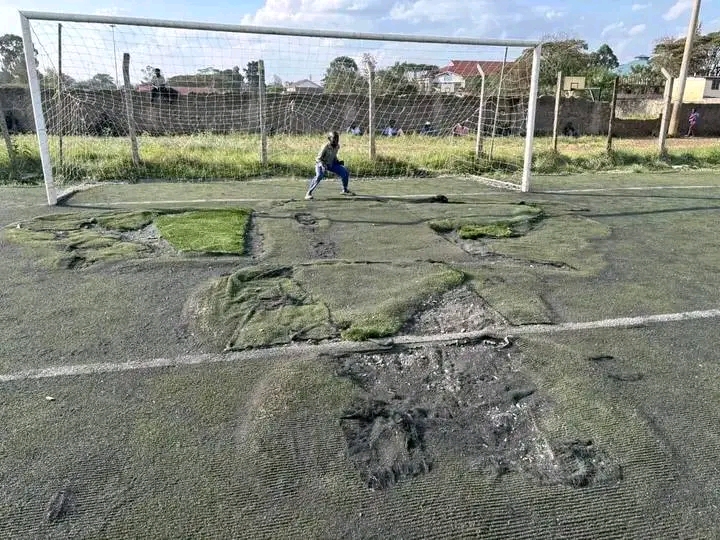The deteriorating condition of Jericho’s Camp Toyoyo and other sports facilities starkly illustrates a narrative of neglect and inadequate leadership within Kenyan football. Recent photos/images shared by concerned fans and stakeholders evoke a profound sense of disappointment.

Camp Toyoyo, once a vibrant hub for sporting activity, now resembles a mere shadow of its former self. The artificial turf is severely damaged, riddled with patches that compromise not only the quality of play but also the safety of the athletes who utilize the space.
In 2015, the facility underwent a significant transformation when an artificial turf was installed under the auspices of FIFA, with support from the local community. This upgrade, which cost taxpayers Ksh. 50 million, included the installation of floodlights and changing rooms, primarily funded by the Makadara Constituency Development Fund during the tenure of former MP Benson Mutura. The renovation attracted several Kenyan Premier League (KPL) clubs, including league champions Gor Mahia, who used the ground as a training facility. Additionally, numerous KPL matches were hosted there.
In stark contrast, Nairobi’s City Stadium—now renamed Joe Kadenge Stadium—has suffered even greater decline since its construction in the 1960s. Once a venue for prestigious KPL matches, it has devolved into a neglected site, resembling a dumping ground rather than a facility for sporting events. Despite repeated assurances from previous administrations to revitalize the stadium, it has remained in disrepair for years.

City Stadium was noteworthy as the first stadium in Kenya to feature an astroturf, installed in 2008 with funding from FIFA. Selected as part of the “Win with Africa in Africa” initiative, it aimed to enhance sports infrastructure across the continent in preparation for the 2010 World Cup. Yet, despite this noble initiative, the subsequent administration failed to maintain the facility, leading to the turf’s current dilapidated state, rendering it unfit for any competitive matches for over five years.
Similarly, the Moi Stadium in Kisumu, another facility funded through FIFA’s Forward program ten years ago, is now in a regrettable state. The Ksh. 53 million allocated for the FIFA Goal Project was once effectively utilized, but following changes in football administration, the stadium has fallen into disuse. It ceased to host KPL matches, despite being actively used by Gor Mahia from 2015 to 2019, until it was deemed unfit for players.

These deteriorating conditions prompt critical questions from football fans: What has become of the FIFA Forward funds that were intended for the enhancement of these facilities? Where are the resources allocated by the current Football Kenya Federation (FKF) going? Why have the turfs, initially meant to foster grassroots football and support league matches, been left to decay?
The stories of Camp Toyoyo, City Stadium, and Moi Stadium highlight a troubling trend of mismanagement and neglect in Kenyan football infrastructure. The community, players, and fans deserve better stewardship of the resources intended to nurture and develop the sport in the country.

